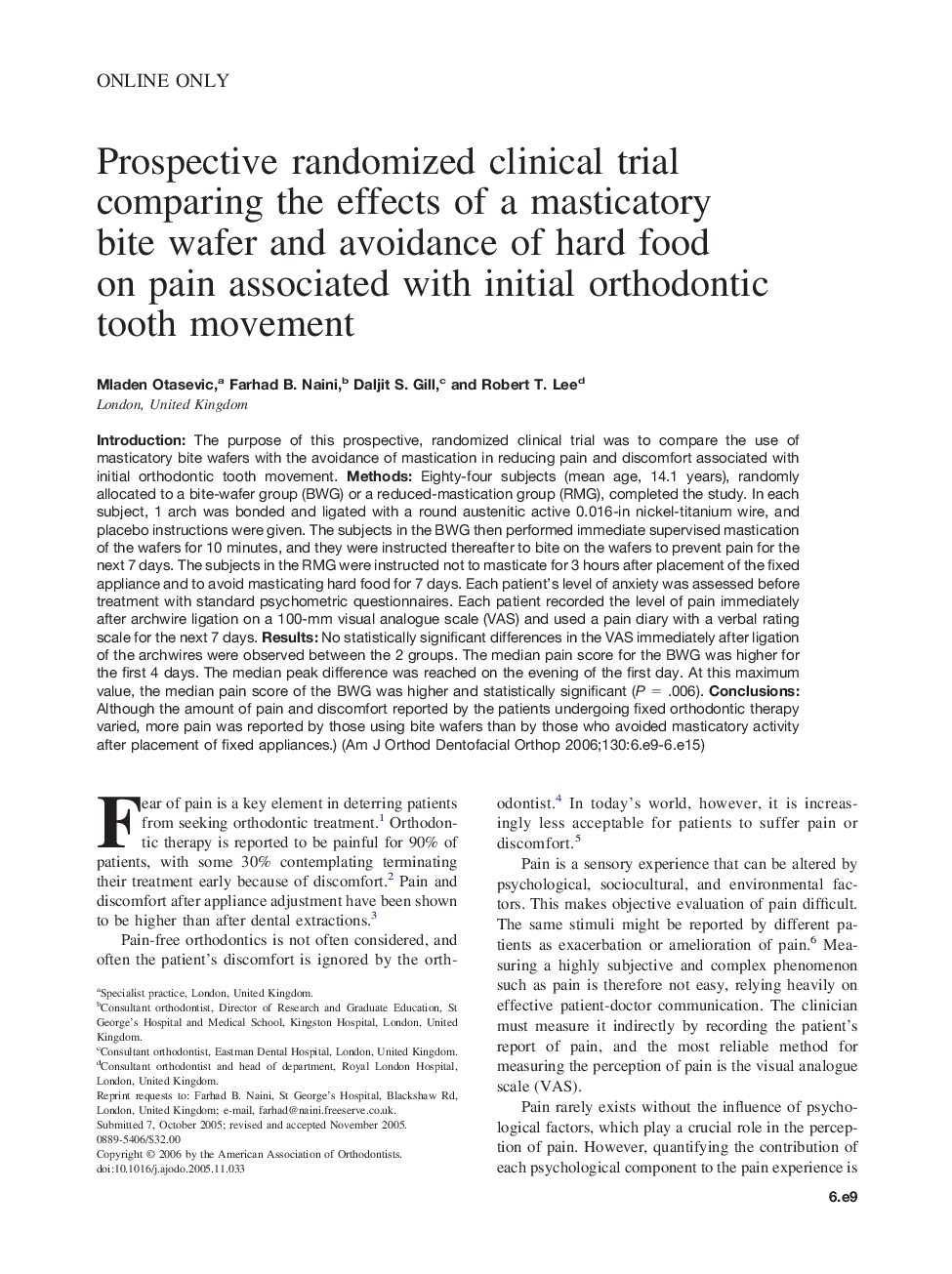| Article ID | Journal | Published Year | Pages | File Type |
|---|---|---|---|---|
| 3118997 | American Journal of Orthodontics and Dentofacial Orthopedics | 2006 | 10 Pages |
Introduction: The purpose of this prospective, randomized clinical trial was to compare the use of masticatory bite wafers with the avoidance of mastication in reducing pain and discomfort associated with initial orthodontic tooth movement. Methods: Eighty-four subjects (mean age, 14.1 years), randomly allocated to a bite-wafer group (BWG) or a reduced-mastication group (RMG), completed the study. In each subject, 1 arch was bonded and ligated with a round austenitic active 0.016-in nickel-titanium wire, and placebo instructions were given. The subjects in the BWG then performed immediate supervised mastication of the wafers for 10 minutes, and they were instructed thereafter to bite on the wafers to prevent pain for the next 7 days. The subjects in the RMG were instructed not to masticate for 3 hours after placement of the fixed appliance and to avoid masticating hard food for 7 days. Each patient’s level of anxiety was assessed before treatment with standard psychometric questionnaires. Each patient recorded the level of pain immediately after archwire ligation on a 100-mm visual analogue scale (VAS) and used a pain diary with a verbal rating scale for the next 7 days. Results: No statistically significant differences in the VAS immediately after ligation of the archwires were observed between the 2 groups. The median pain score for the BWG was higher for the first 4 days. The median peak difference was reached on the evening of the first day. At this maximum value, the median pain score of the BWG was higher and statistically significant (P = .006). Conclusions: Although the amount of pain and discomfort reported by the patients undergoing fixed orthodontic therapy varied, more pain was reported by those using bite wafers than by those who avoided masticatory activity after placement of fixed appliances.)
